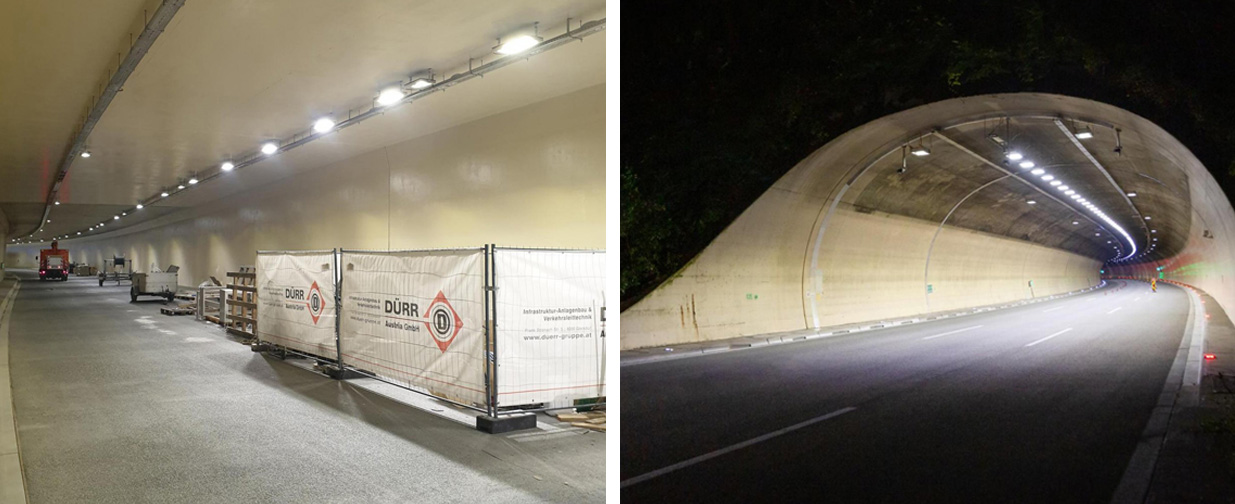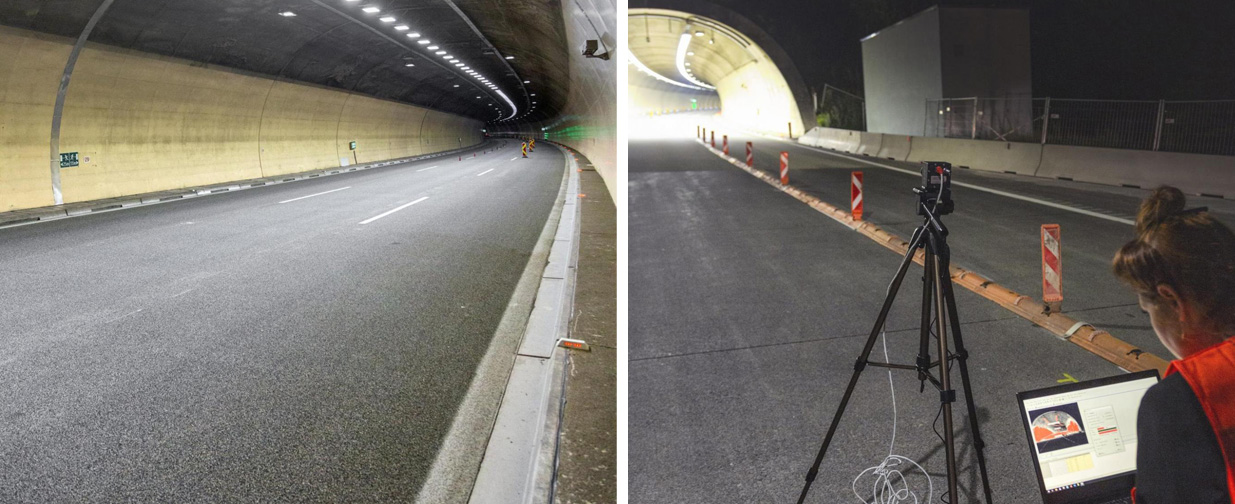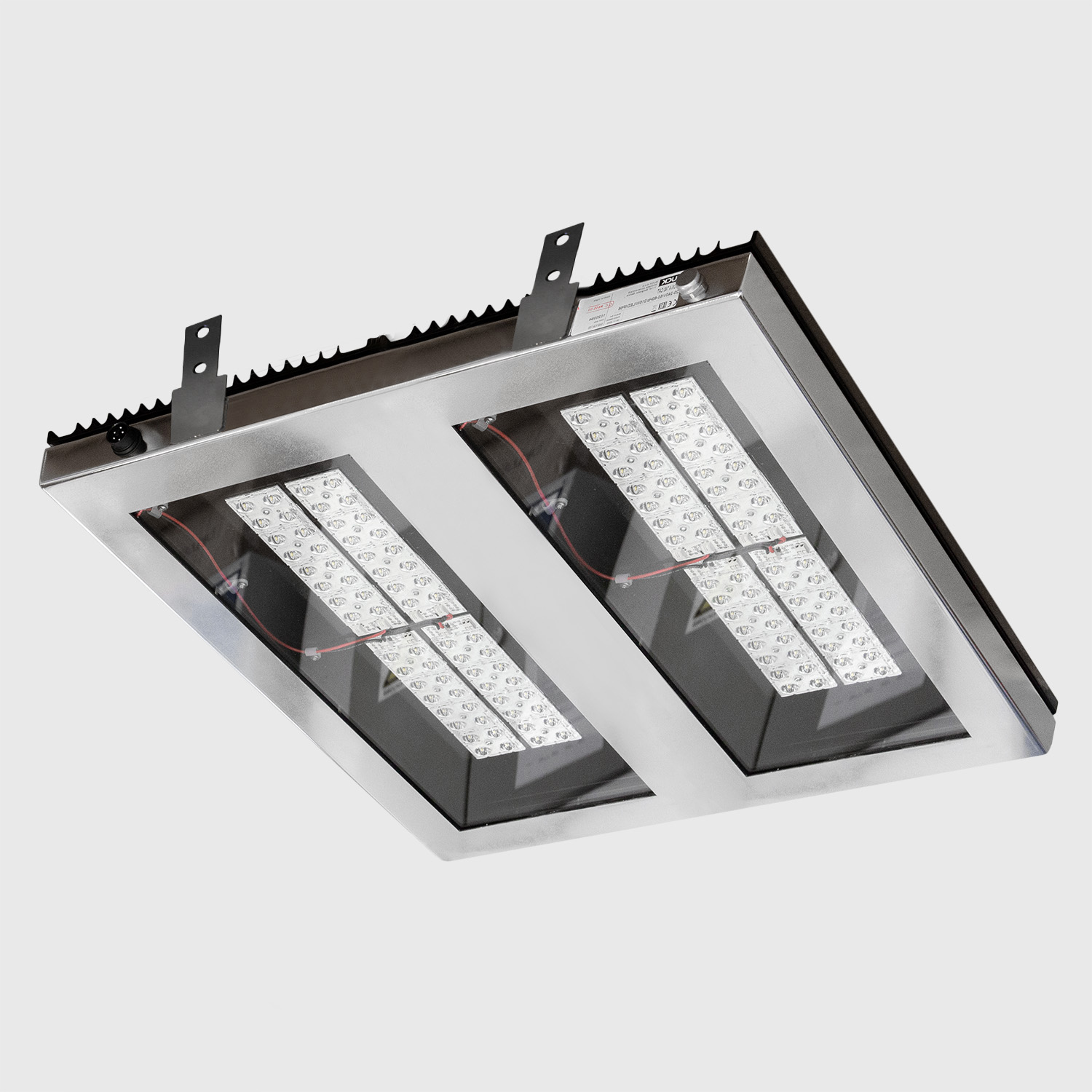Tunnels are considered as one of the most complex and expensive infrastructure facilities.
The advantage they provide through fast and reliable transport, saving time, and sometimes connecting places that couldn’t be connected in any other way, makes them necessary and desirable infrastructure facilities despite high financial investments. We shouldn’t neglect the reduction of the unfavourable impact that open road traffic has on the local environment, which has become increasingly important in recent years.
A good tunnel is safe, so regulating safety and unhindered traffic flow is essential.
The task of tunnel lighting is to constantly provide the same level of safety and comfort for road traffic in the tunnel as on open roads.
In tunnels, where access to maintenance is limited, reliable operation of lighting systems is of great importance. A circumstance that complicates the process of tunnel lighting is the presence of high humidity and waste gases in the air, the combination of which can lead to the formation of sulfuric or nitric acid. In environments like this, luminaires are at high risk of damage. Regular maintenance can alleviate the problems, but closing the tunnel due to such works is impractical due to logistical reasons and the high costs.
In such demanding environments, the design and quality of luminaires are vital, helping to protect them from penetration of fine particles and acids, resistance to vibration, and reduced likelihood of physical damage or overheating.
Tunnel lighting areas and their significance
A prerequisite for any safe movement and the key task of a tunnel lighting system is to supply the driver with complete visual comfort at every stage of the journey. Tunnel lighting zones are defined according to the needs of the driver’s visual perception of the surrounding conditions while driving.
1. The approach zone is the section of open road before entering the tunnel and the length of the required stopping distance for the planned speed of traffic. In this zone, the lighting may be less or much more than inside the tunnel (depending on the time of day, year, and weather conditions).
During the day, the high contrast between intense external lighting and low light inside the tunnel tires the driver’s eyes and weakens his ability to spot obstacles. Due to a significant reduction of the field of vision, from the wide outer space to the narrow opening of the tunnel portal, the so-called “black hole effect” occurs in this zone – the driver’s inability to see the tunnel interior space in a short time. To ensure optimal visibility conditions in this case it is necessary to provide adequate lighting of the first, entrance, and a tunnel zone of appropriate length.
At night, the opposite situation occurs, from driving on an unlit road you need to adapt to driving through a lit tunnel. For a gradual visual adaptation, it is necessary that the access area is illuminated by street lights, and the lighting level should be lower than in the tunnel itself.
2. The adaptation zone is responsible for regulating the lighting in the tunnel itself and consists of a threshold zone and a transition zone. The total length of the adaptation zone depends on the travel speed and the lighting parameters relating to the approach and inner tunnel zones it connects.
The threshold zone is the first section of the tunnel entrance. Usually, the frequency of traffic accidents in this zone of the tunnel is much higher than in other zones, and it is extremely important to provide conditions that enable the timely detection of possible obstacles.
The transition zone continues to the threshold zone, where the light intensity decreases further, continuously, to the level of illumination in the inner tunnel zone.

3. The inner zone of the tunnel is far from the area affected by natural light. The goal is optimal artificial lighting, according to all parameters that provide stable visibility necessary for safe traffic.
4. The exit zone of the tunnel, as well as the entry zone, are zones for visual adaptation of drivers, in this case from internal to external conditions. In daytime conditions, this adaptation is brief for shorter tunnels and usually does not require additional lighting. However, in the case of long tunnels, it is necessary to increase the lighting linearly along the top path, up to the tunnel exit.
Additional factors in tunnel lighting
For the quality of lighting in the tunnel, it is necessary to have a good knowledge of the specifics of this infrastructure facility. The design solution should take into account the position and orientation of the luminaires, the cross-section of the tunnel, the permitted speed, access conditions, and the construction of the roadway. The lights in the tunnels are mostly arranged linearly, parallel to the tunnel axis, at the right distance. When the luminaires are placed centrally in the vault of the tunnel, additional rows of luminaires are usually placed in the entrance and transition zone to increase the illumination of the tunnel tube.
The light reflection characteristics of the materials used in the construction of walls and roadways also play an important role in the quality of lighting and energy savings. That is why concrete is often used instead of asphalt on the road in tunnels, due to the higher diffuse reflection.
No tunnel is the same, so it is necessary to approach each one considering its peculiarities. There is no global standardization for tunnel lighting. In projecting are used the recommendations of the International Commission on Illumination CIE-88 (Guide for the lighting of roads, tunnels, and underpasses), and many countries rely on their own recommendations and standards for tunnel lighting.
LED lighting in tunnels
The use of the latest generation of LED light sources, instead of the classic light sources, is a much better and more practical option in tunnel lighting. Long service life, more adequate optical performance, and excellent reproduction of light colour are just some of the characteristics of LED lighting, which make it an ideal solution for tunnel lighting. Instant ignition of the light source enables more efficient control and regulation of the light flux.
BUCK company has recognized the potential of this branch of lighting as well as the importance of quality luminaires that are necessary to carry out tunnel lighting projects according to all the requirements. We have developed the VISION luminaires family, part of our smart tunnel lighting system that provides excellent lighting performance in different types of tunnels. Easy installation and servicing, as well as long service life enabled by advanced corrosion and impact protection technology, are just some of the features of our luminaires. Our team of experts who deal with the metric analysis of each project, as well as our commitment to work and research is recognized by others, so we can boast of cooperation with the company ASFINAG, for which we worked on several tunnel projects.

Every new tunnel lighting project must be preceded by comprehensive studies aimed at providing absolute safety in traffic. Today’s level of information technology development has made an outstanding contribution to the process of lighting control and management. BUCK company is always keeping up with all the technological achievements of our industry, and our development team is constantly working to create new products and improve existing ones.











